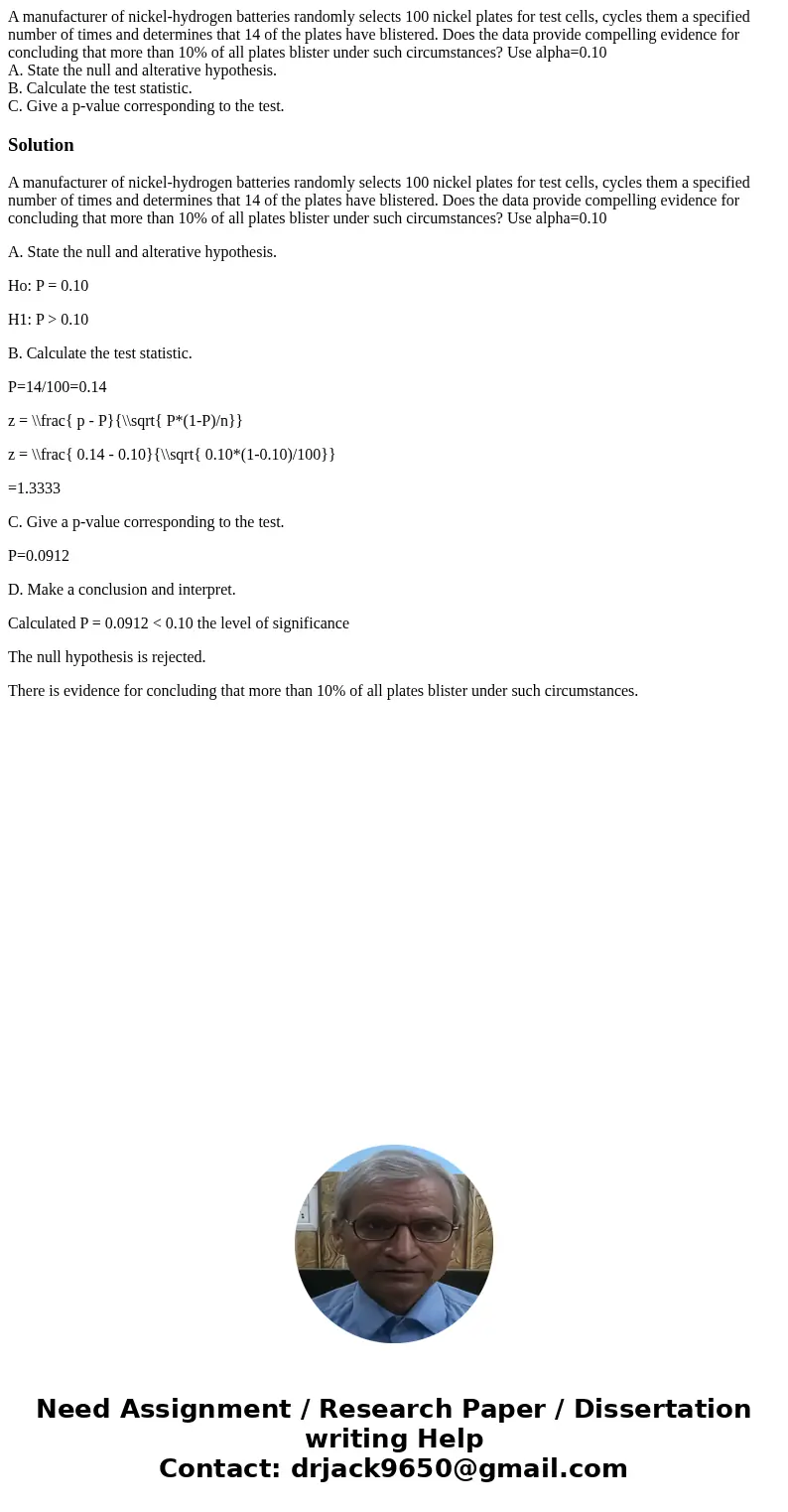A manufacturer of nickelhydrogen batteries randomly selects
Solution
A manufacturer of nickel-hydrogen batteries randomly selects 100 nickel plates for test cells, cycles them a specified number of times and determines that 14 of the plates have blistered. Does the data provide compelling evidence for concluding that more than 10% of all plates blister under such circumstances? Use alpha=0.10
A. State the null and alterative hypothesis.
Ho: P = 0.10
H1: P > 0.10
B. Calculate the test statistic.
P=14/100=0.14
z = \\frac{ p - P}{\\sqrt{ P*(1-P)/n}}
z = \\frac{ 0.14 - 0.10}{\\sqrt{ 0.10*(1-0.10)/100}}
=1.3333
C. Give a p-value corresponding to the test.
P=0.0912
D. Make a conclusion and interpret.
Calculated P = 0.0912 < 0.10 the level of significance
The null hypothesis is rejected.
There is evidence for concluding that more than 10% of all plates blister under such circumstances.

 Homework Sourse
Homework Sourse